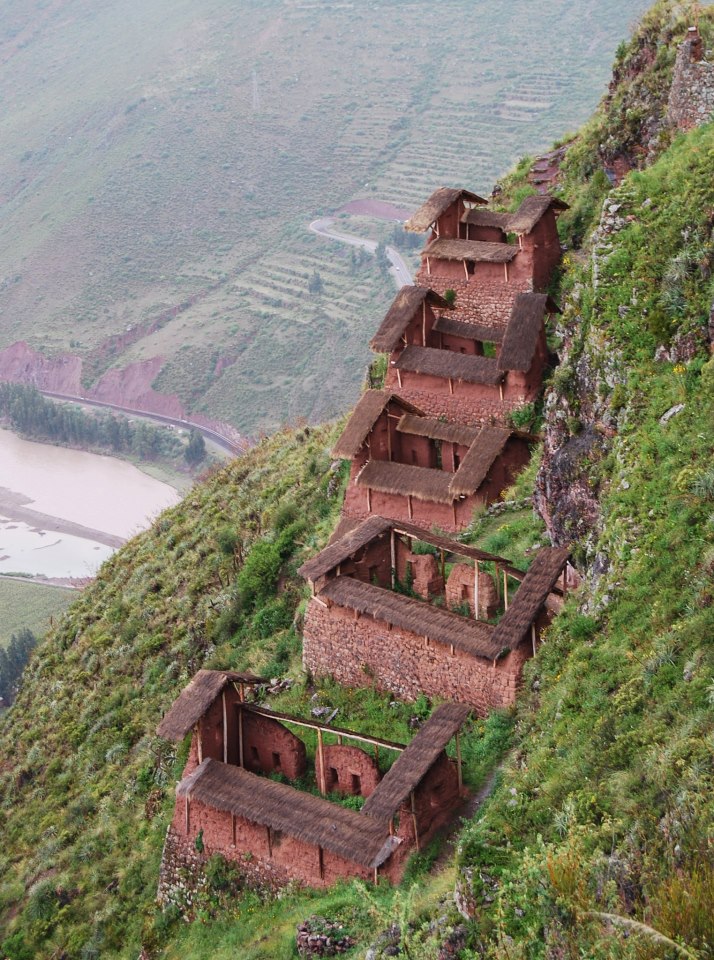Collcas on the Hill, Inca Food Storage and Governance

The Inca civilization was based on agriculture. They carefully developed what we could call today “a practice of savings”. For this, they built the famous collcas, or qollqakuna, which were buildings or spaces used for storage, especially for food. These collcas formed a very important node in the networks of Inca governance; they were an important part of the Empire’s political economy. s a result, each village, town, or city required, of necessity, an adequate number of storage units in order to provide for the population should natural disasters affect the food supply.

Collcas were generally built outside the towns. They were mostly built on the sides of hills, high and well ventilated places. The breeze and wind served to naturally keep temperatures down and preserve the food. The storage buildings had channels for ventilation and systems of drainage; under their floors they had channels to direct humidity away. This helped preserve foods that required dryness to avoid rot, such as corn. Thanks to the channels, it was possible to control the humidity of the earth in the storage units. The walls could be of stones and morter, with plastered walls inside, or they could have a foundation of stone with walls of adobe.
There were different forms of collcas, categorized according to the products that they were intended to store. Among them we find:

The circular forms. These were destined for the conservation of corn. In some collcas they have found shards of pottery pots from which they determined the corn was preserved once removed from the cob. This was especially the case in the famous collcas of Raqchi.
The rectangular forms. These were built for the storage of tubers, which were gathered in ceramic pots. This impeded rodent damage. Another form of caring for the stored foods was to lay down a layer of dry muña herb which impeded worms entering the storage. Then they would place a lightly woven payer of dried straw, shaped into mats. This allowed air to circulate. Then they tied everything with larger ropes in order to make small, loose bundles.

According to the Spanish chroniclers, the Incas stored the following inside the collcas.
Corn, potatoes, dried duck breasts, wood, jerky, fish, bird flesh, partridges, doves, coca leaves, and dried fruit. During times of scarcity this storage was relied on, although it was also used as gifts to the leaders of other nations, for specific rites, and for the festivities of Tawantinsuyo, the Inca Empire.

The Incas also stored utilitarian goods, such as arms, ceramics, textiles, blankets, sandals, raw materials, carbonized wood, and more. These enormous deposits of goods were carefully administered by the Incas. If nothing else, this concern for storage demonstrated their superiority over the nations impoverished with the rise of this grand civilization.
In conclusion, we can say that they richness and the great success of the Inca civilization was not based on the quantity of gold or silver they had. Rather it stemmed from their extraordinary focus on the production and storage of food and other goods.





